Shelter in the trees has always been the best place for dreaming and meditating. No wonder, treehouses are a constant inspiration for modern architects. From a hut hidden in the foliage of a tree to unique elevated resorts based on the principles of biophilic design, these projects blending into nature and becoming part of it literally take treehouses onto the next level.
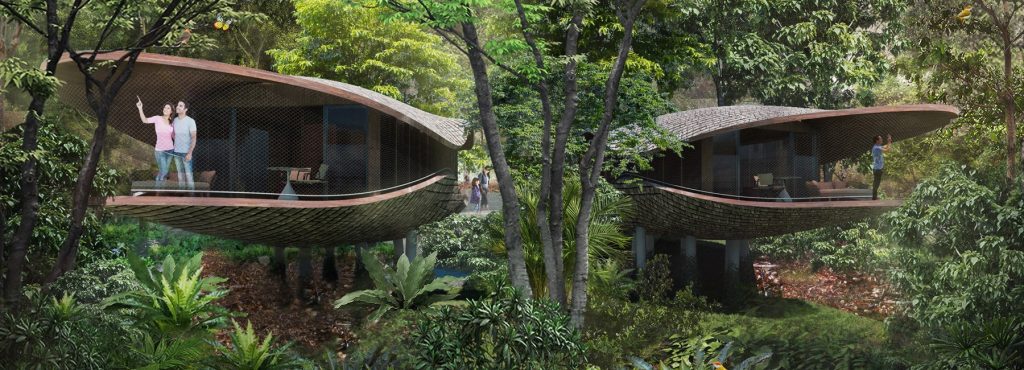
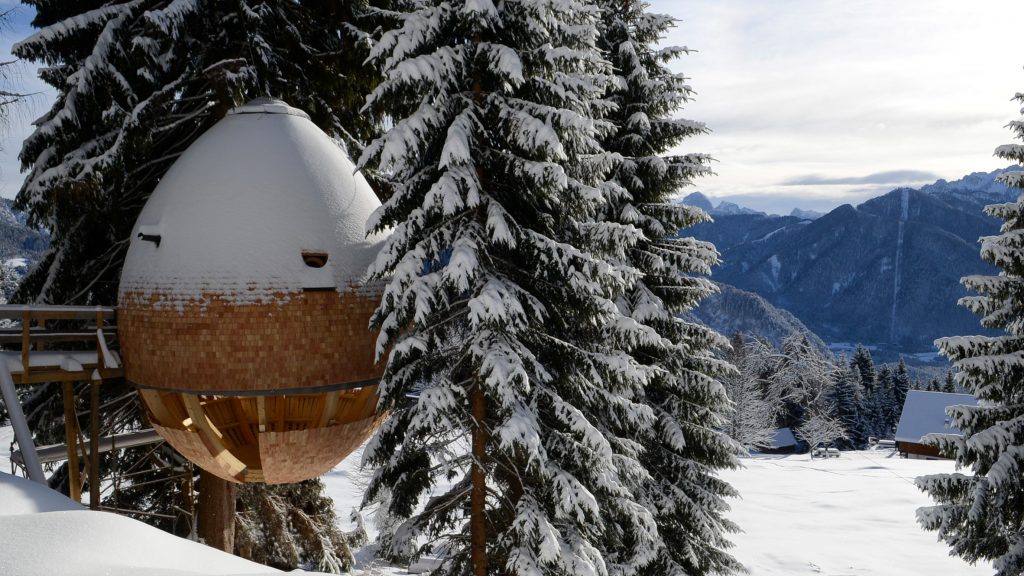
Pigna treehouses by Claudio Beltrame and DomusGaia (via dwell)
DomusGaia, an Italian firm that manufactures wooden prefabricated homes, collaborated with the local architect Claudio Beltrame to develop Pigna tree houses, a part of Tarvisio mountain farmhouse retreat Malga Priu located at 1,200 metres above sea level in the Dolomites, a UNESCO World Heritage area.


Pigna treehouses by Claudio Beltrame and DomusGaia (via dwell)
As their names suggests, the structures are inspired by the shape of pinecones. To enhance this similarity, the exteriors is clad in larch wood shingles mimicking pinecone scales.
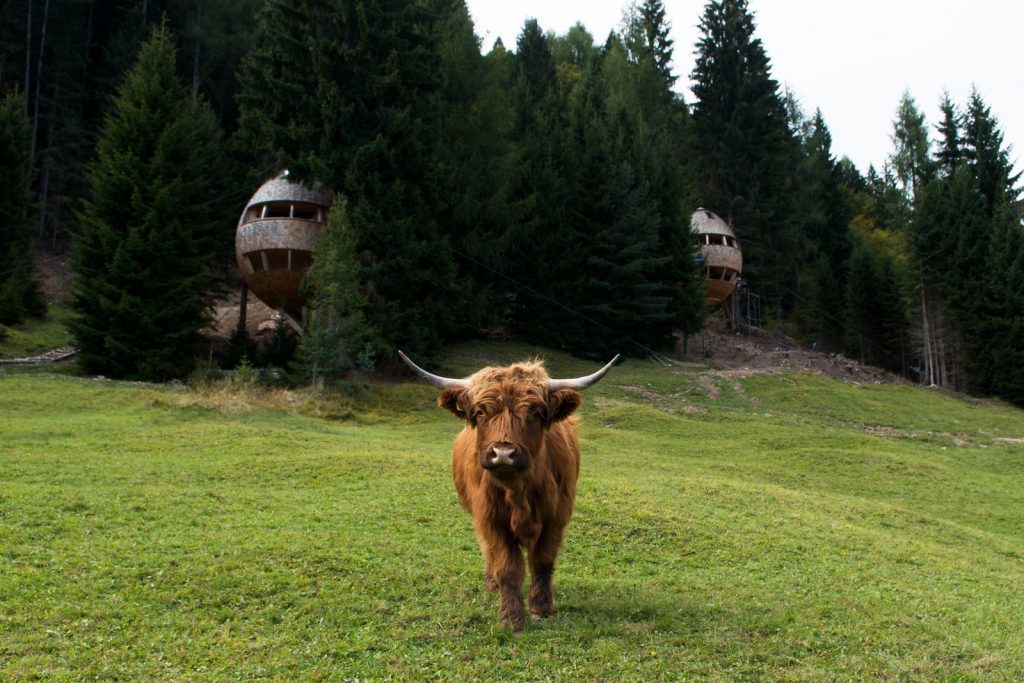
Pigna treehouses by Claudio Beltrame and DomusGaia (via dwell)
The treehouses are constructed from cross-laminated timber (CLT) molded into boomerang shapes and insulated with breathable wood fibre. Described by the architect as “houses without foundations”, they are raised about 10 metres off the ground, anchored to the surrounding fir trees and accessible via a bridge or outdoor stairs.
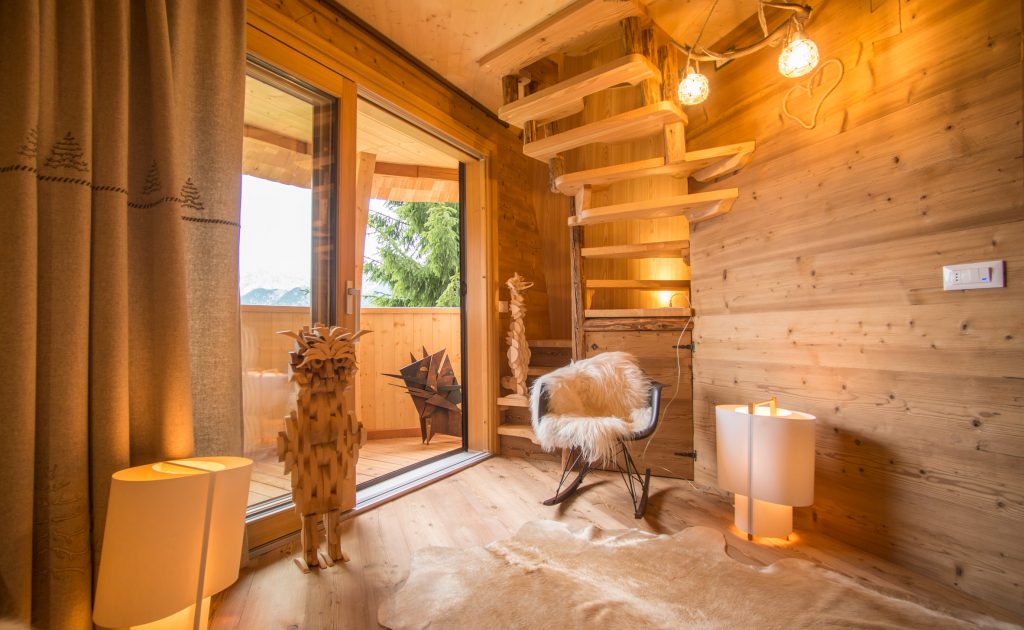
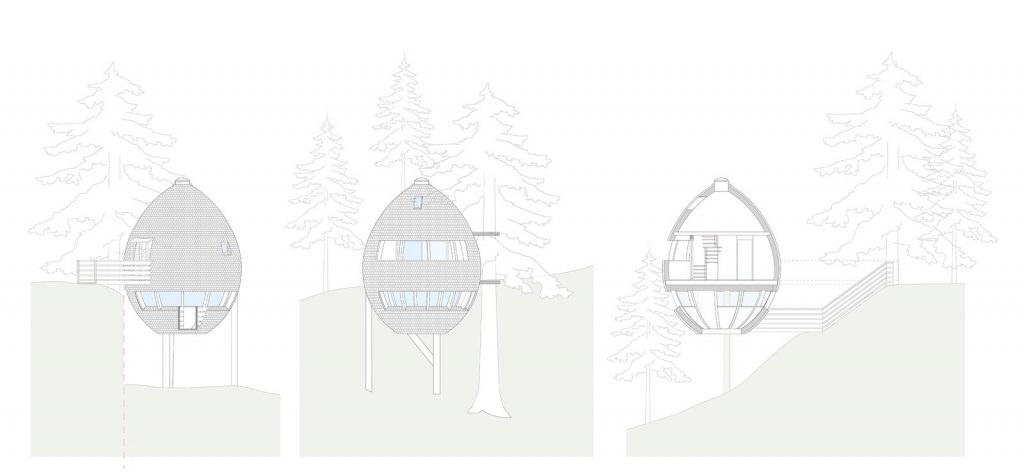
Pigna treehouses by Claudio Beltrame and DomusGaia (via dwell)
Compact on the outside, the houses comprise three storeys, with living areas spread across all the levels and connected by wooden stairs. The first level offers 350-degree views through its curved windows and a panoramic terrace. The second level includes kitchen, bathroom and two sheltered balconies providing spectacular Alpine views, while the third level features a domed bedroom with a circular skylight right above the double bed, in the tip of the egg-shaped treehouse, allowing those inside to gaze up into the starry sky.

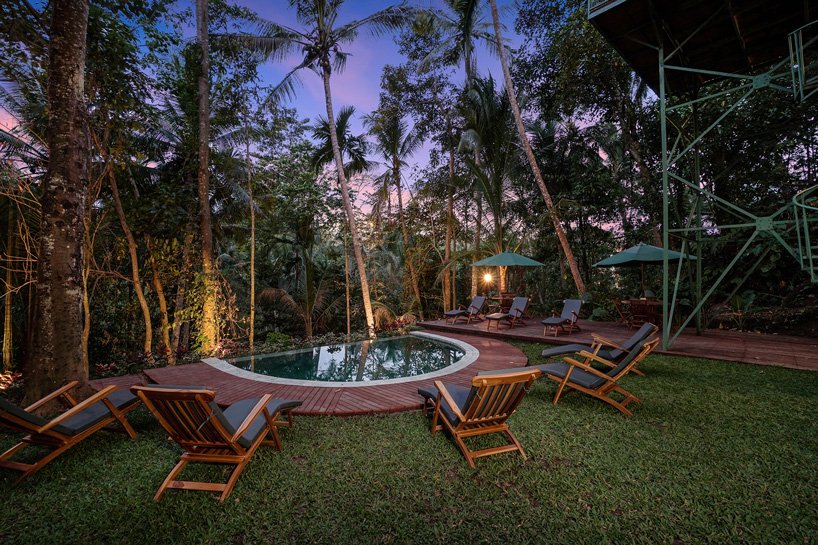
LIFT treetop hotel by Alexis Dornier (ph: KIE)
Inspired by the idea of minimal footprint and maximal views, Alexis Dornier, Germany-born architect currently living in Indonesia, has designed a series of stilted treehouses for the LIFT treetop boutique hotel in the uplands of Bali. Balancing between tropical and industrial styles of architecture, each structure includes a thatched roof style that sits atop a steel frame and can be accessed via a spiral staircase winding around the stilts.
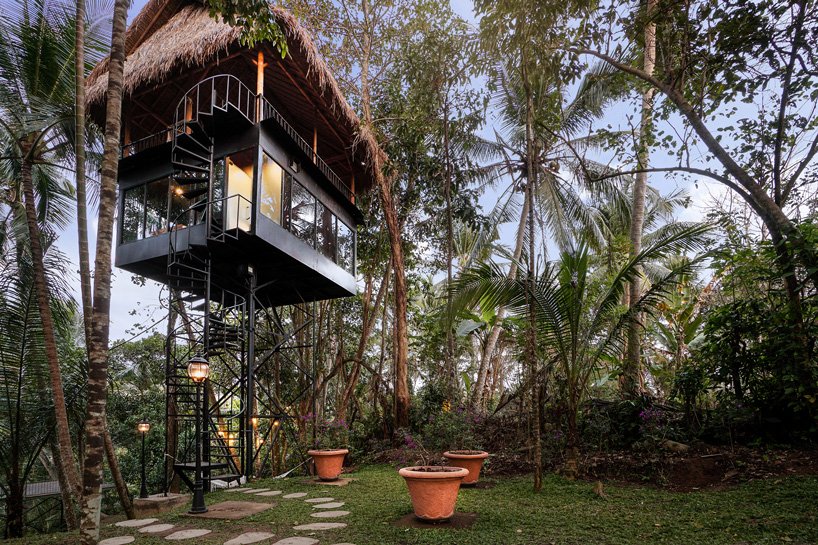
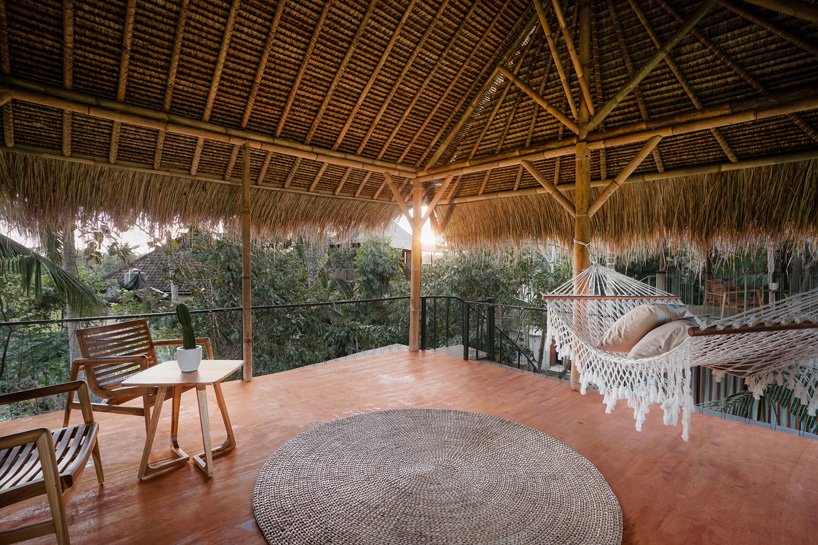
LIFT treetop hotel by Alexis Dornier (ph: KIE)
Challenged to find a more cost-effective and more sustainable way to build on Bali, where developments are often constructed using high quantities of concrete, Dornier came up with the design that has as little impact on the environment as possible.
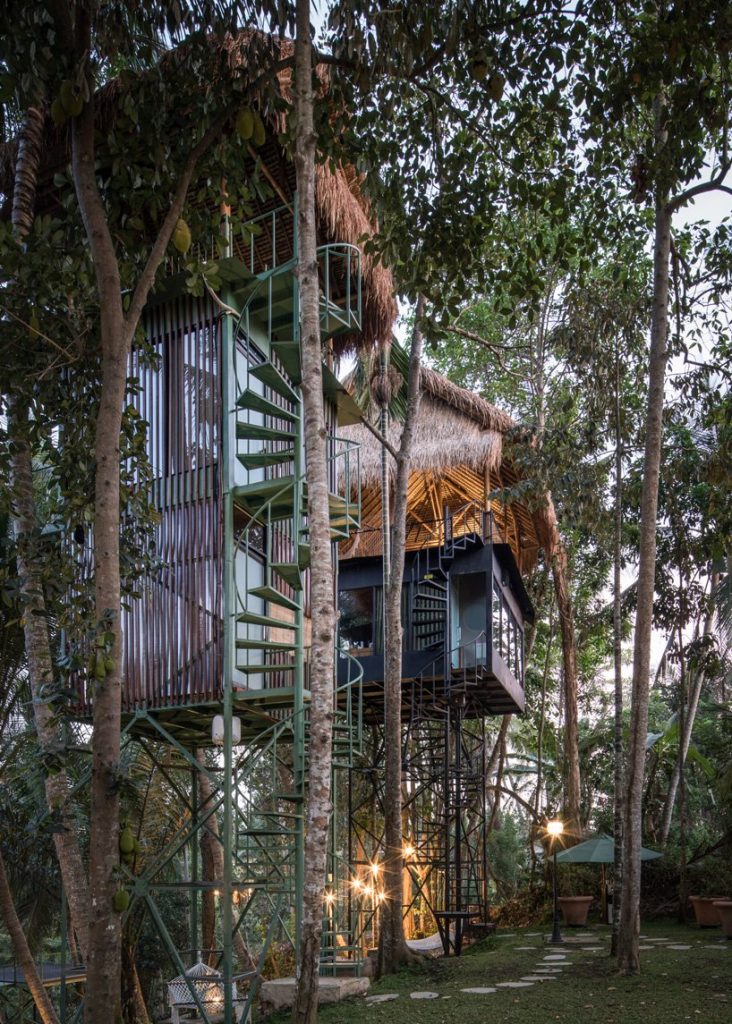
LIFT treetop hotel by Alexis Dornier (ph: KIE)
Every treehouse features a bedroom and a bathroom and can boast large windows and rooftop decks with views of the surrounding forest. Located high in the trees, the off-th-ground rooms take advantage of passive cooling and passive shading.

Mandai Project resort by WOW Architects (via designboom; also the header image)
In line with the principles of biophilic design, gaining popularity as a response to the human need for the experiences of the natural world in order to reduce stress and improve overall well-being, Singapore-based WOW Architects has developed a concept for an eco-friendly resort.
The new resort, which is set to be built in Singapore’s Mandai area, known as a home to the Singapore Zoo, Night Safari and River Safari, will be elevated several meters above the ground, allowing native wildlife to move across the 4.6 hectare site. According to the team, when completed in 2023, “the building and the landscape will become a holistic, immersive experience.”
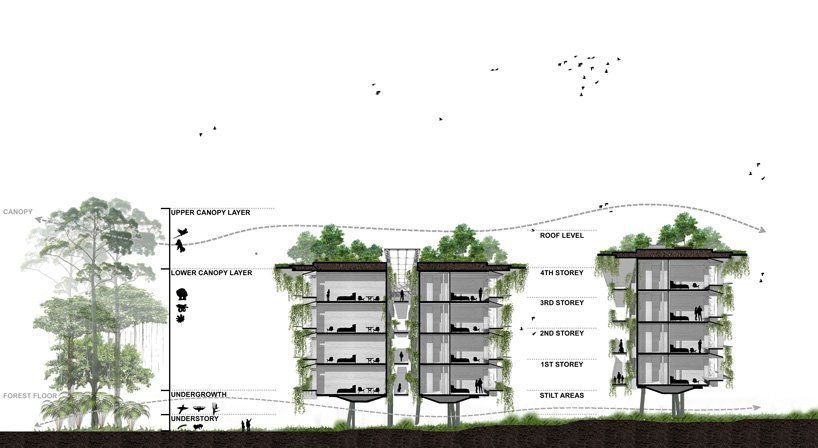
Mandai Project resort by WOW Architects (via designboom)
Sitting below the upper level of the tree canopies, the 24 pod-shaped treehouses will provide views of the surrounding rainforest. During construction, more than half the trees already on the site will be retained, of which 40% are of conservation value, and more native tree species will be planted as part of a re-greening effort.
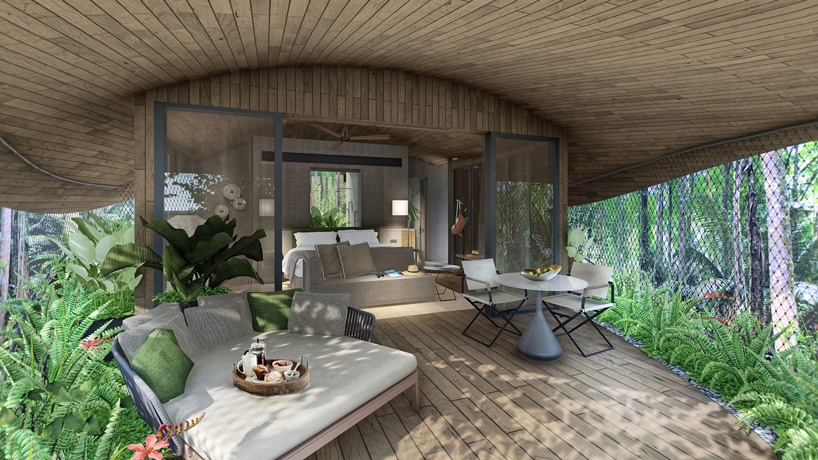
Mandai Project resort by WOW Architects (via designboom)
Designed to offer visitors a ‘conscious stay’, the resort is planned to be the first super low energy (SLE) one in Singapore and will incorporate various energy saving measures, including passive ventilation, mixed mode air-conditioning and solar panels.
The architects will be collaborating with a team of specialist consultancies in landscape, education, sustainability, ecology, horticulture and acoustics to ensure the sustainable design and development of the resort.